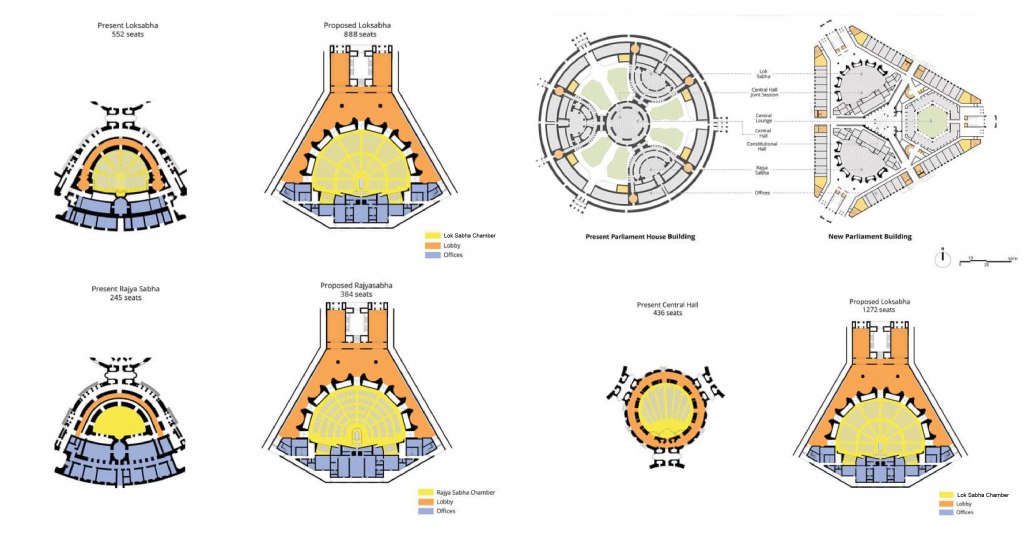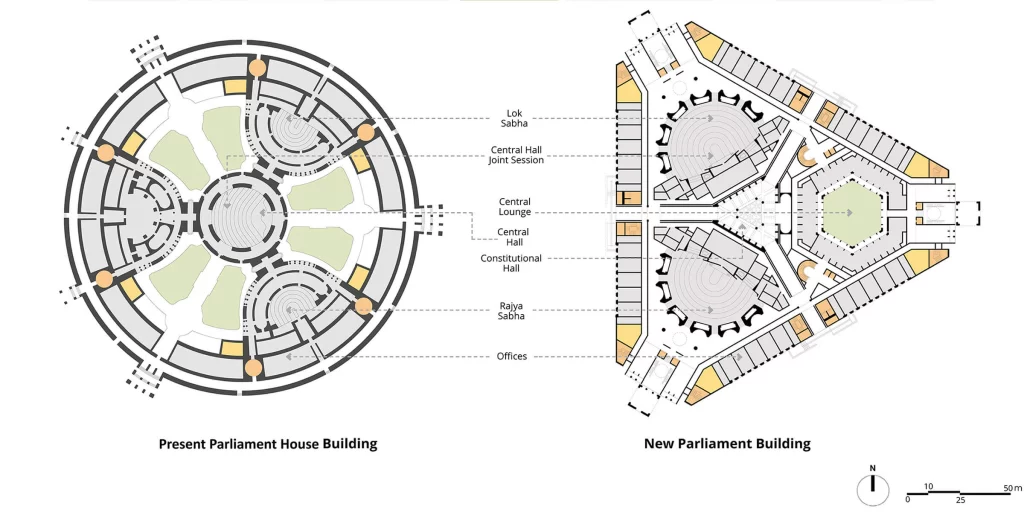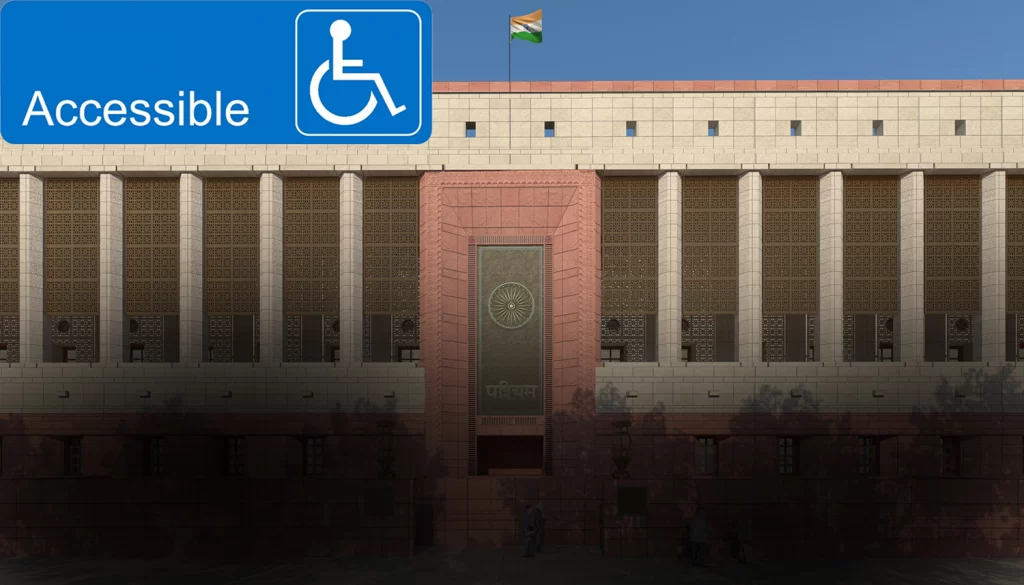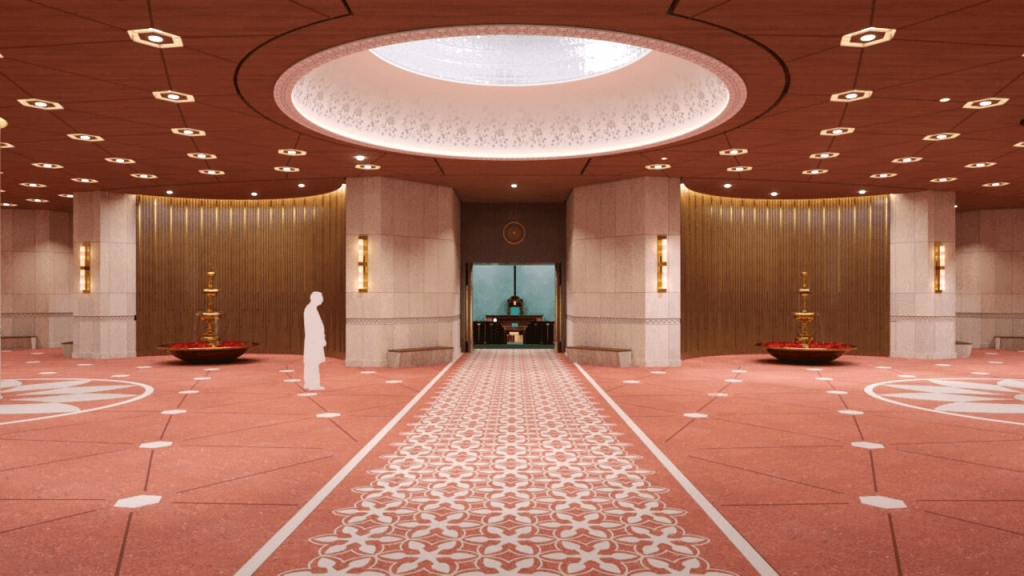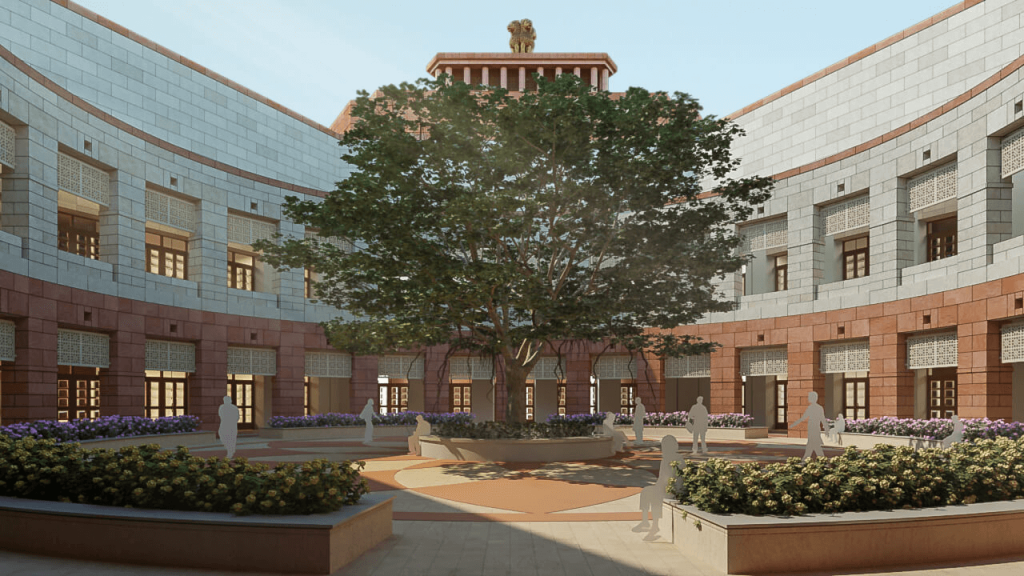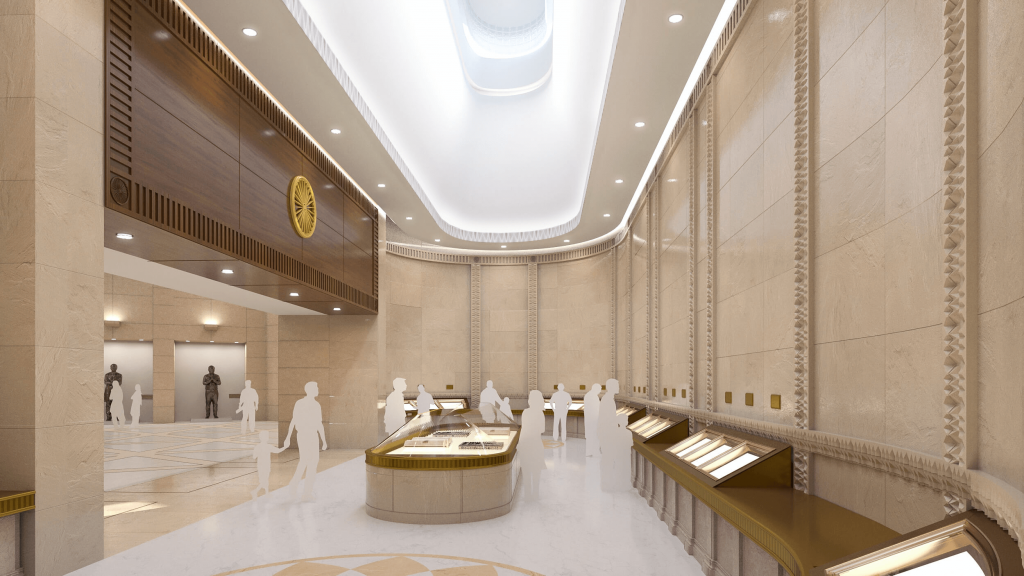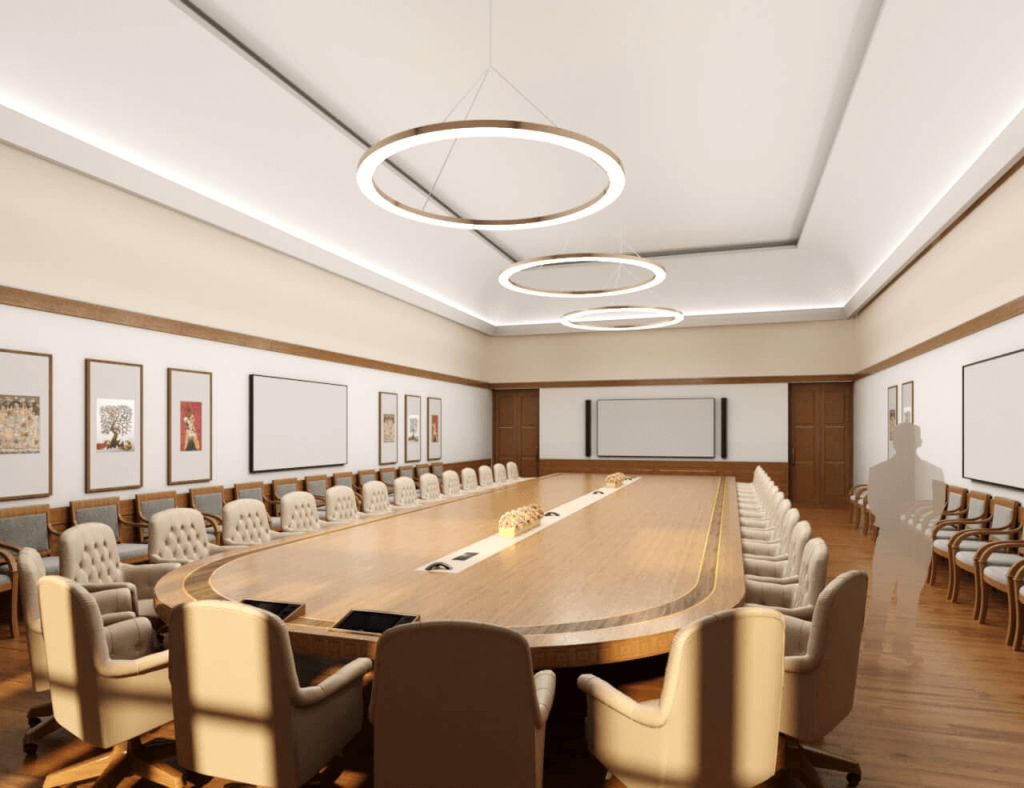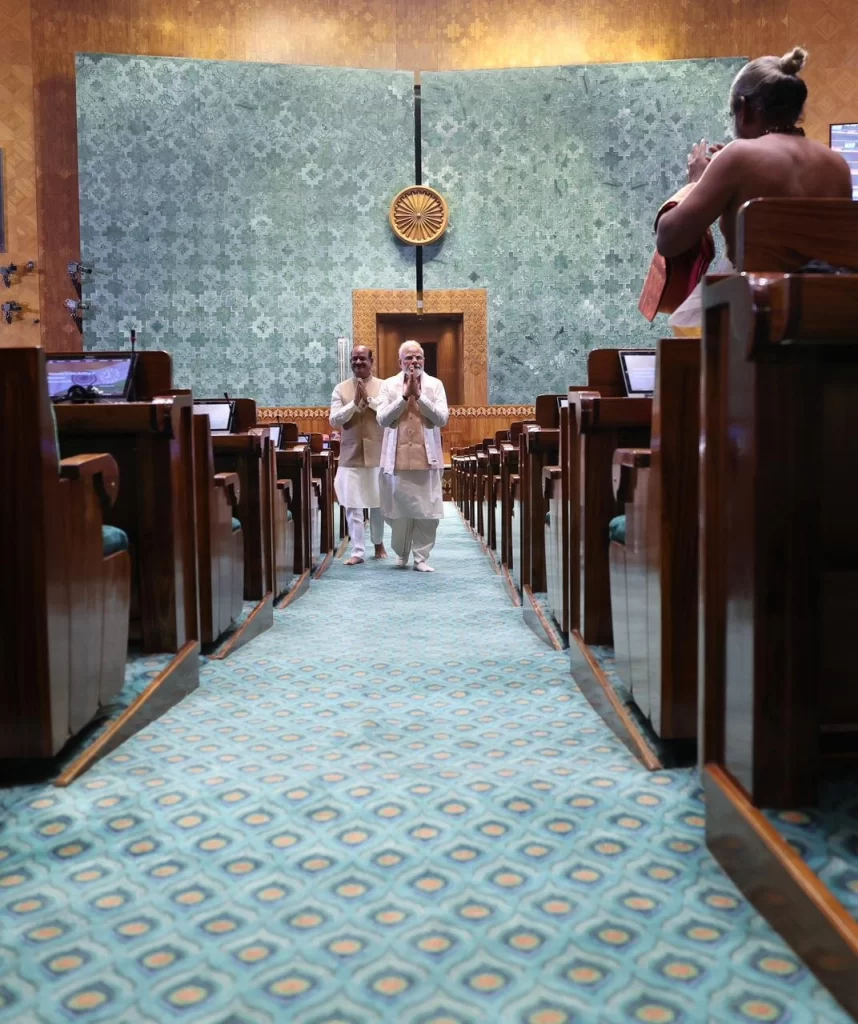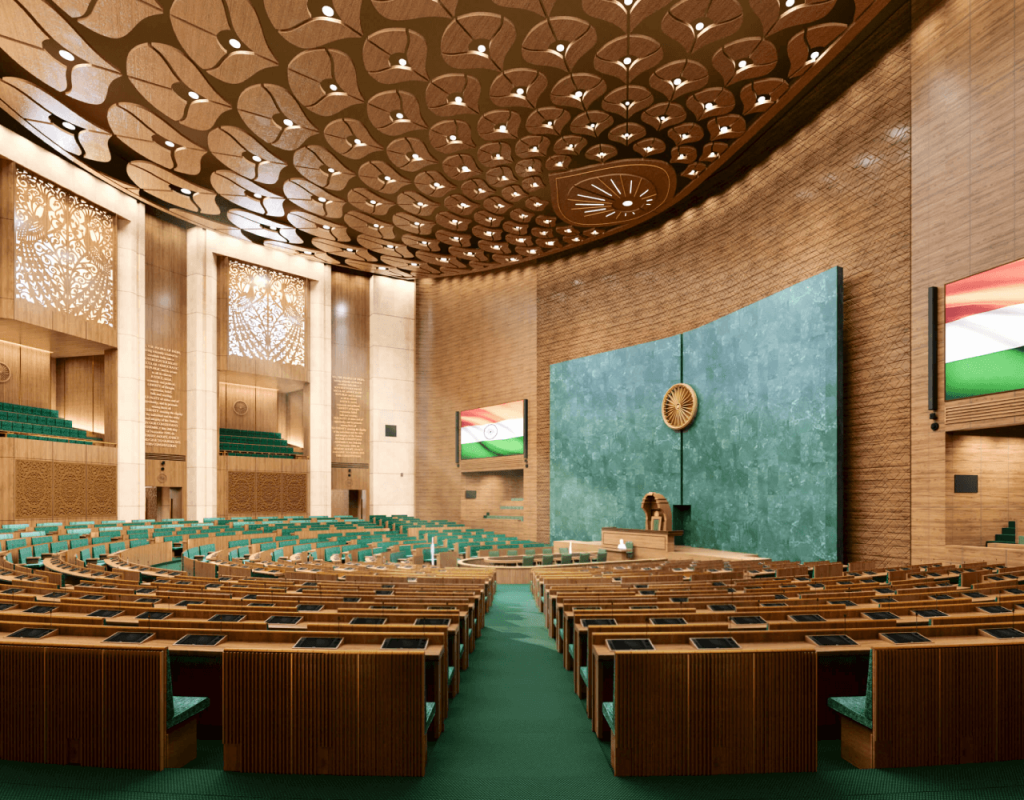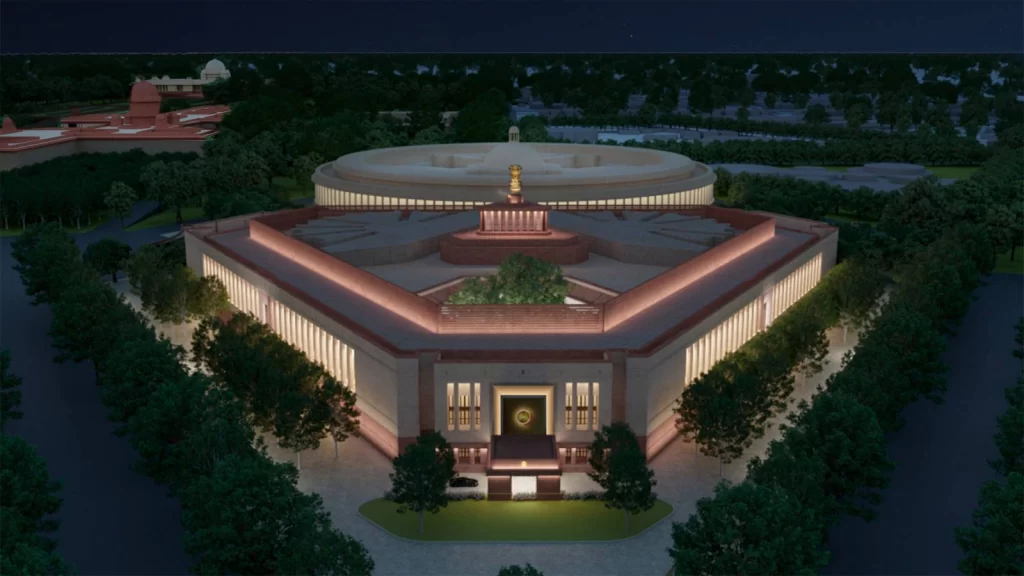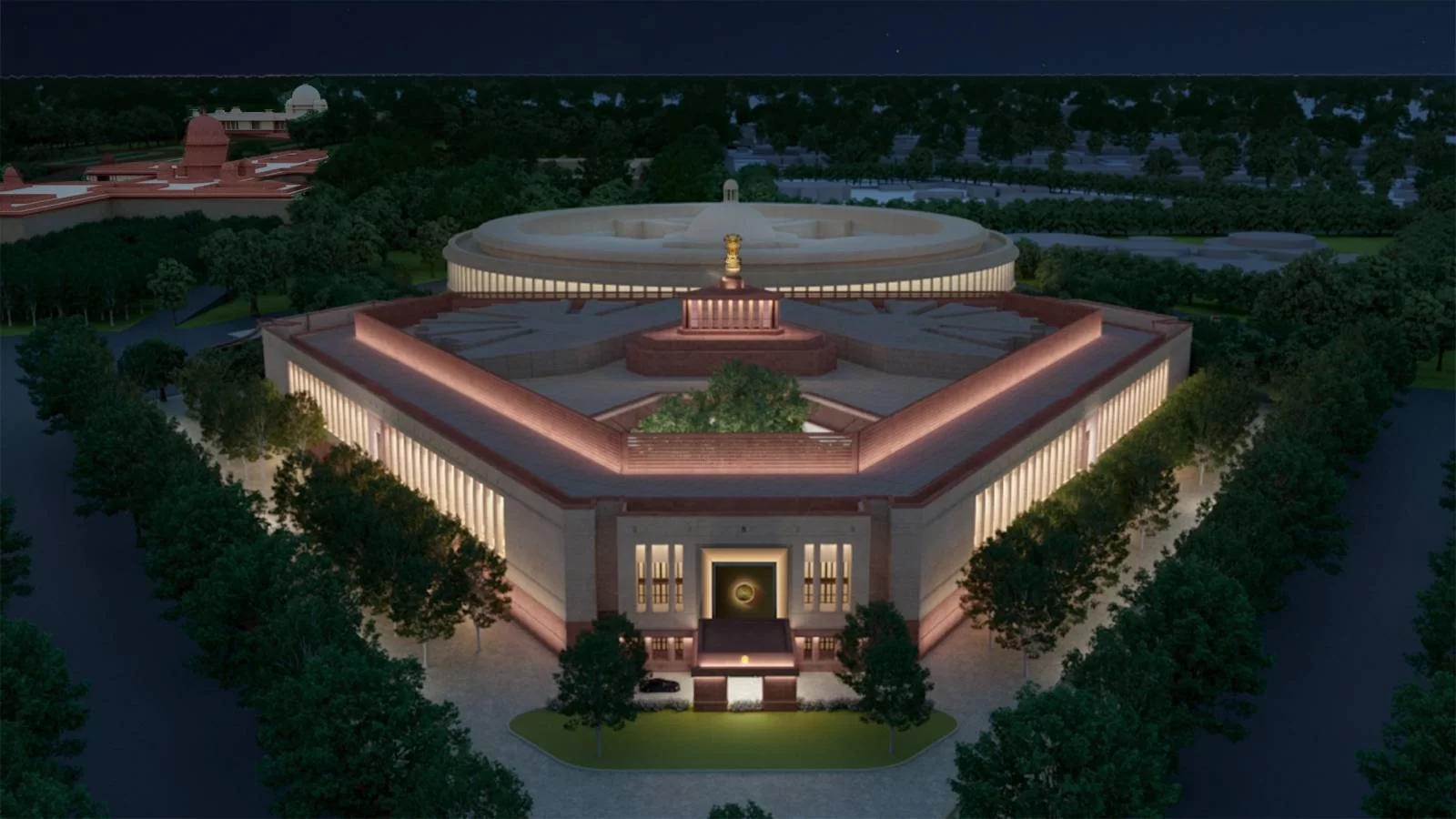Introduction:
India, the world’s largest democracy, is known for its rich cultural heritage and historical landmarks. In a significant step towards embracing the future while honoring its past, the Indian government initiated the construction of a new Parliament building. This architectural marvel will serve as a symbol of India’s progress and democratic values. In this article, we will explore the design, features, and the architect behind India’s new Parliament building.
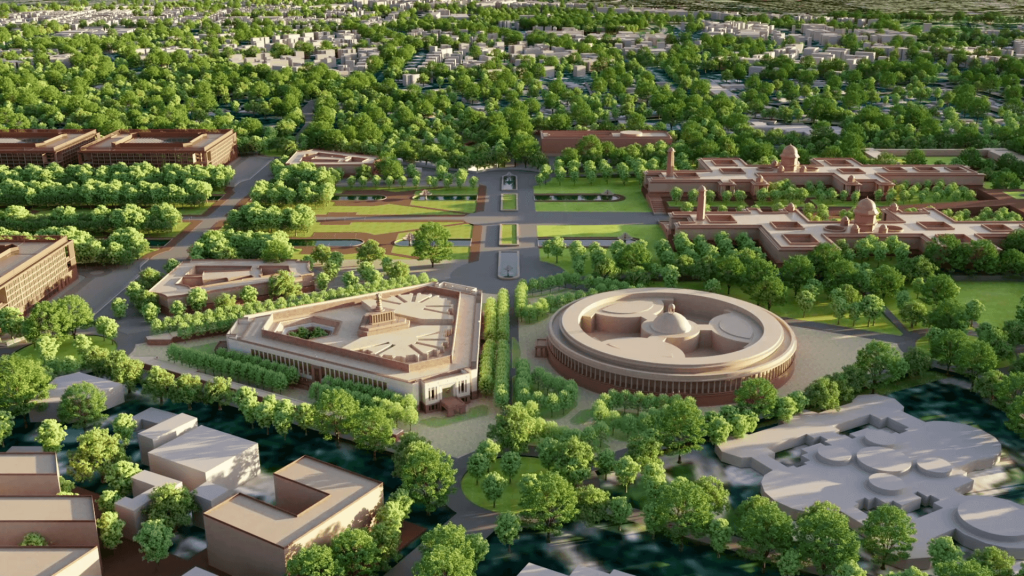
The seating capacity of the old Parliament building was limited to 550 members in the Lok Sabha and 250 members in the Rajya Sabha. Recognizing the need for a larger and more inclusive space, the new Parliament building has been meticulously designed to meet future requirements. With a significant expansion in seating capacity, the new building will provide ample room for 888 members in the Lok Sabha and 384 members in the Rajya Sabha. This increase in capacity reflects India’s democratic growth and ensures that all representatives have the necessary space to engage in meaningful discussions and deliberations.
Architectural Vision and Design:
The design of the new Parliament building embodies a harmonious blend of tradition and modernity. The project was awarded to renowned architect Bimal Patel, the founder of HCP Design, Planning and Management Pvt. Ltd. His vision was to create a structure that reflects India’s diverse culture, heritage, and democratic ethos.
The new Parliament building will be constructed adjacent to the existing historic Parliament House, which was designed by British architect Edwin Lutyens and Herbert Baker. The Lutyens’ building will be preserved as a symbol of India’s colonial past, while the new building will represent the nation’s aspirations for the future.
Timeline and Progress:
The foundation stone for the new Parliament building was laid on December 10, 2020, by Indian Prime Minister Narendra Modi. This marked the formal commencement of the project. The construction work began soon after, and it is being carried out in phases.
The project was completed and inaugurated on May 28, 2023, coinciding with the 75th anniversary of India’s independence. This reflects the government’s commitment to timely completion while ensuring the highest standards of quality and craftsmanship.
Key Features:
Accessibility and Space: The new Parliament building will provide enhanced accessibility with provisions for ramps, elevators, and modern facilities for differently-abled individuals. It will also offer ample space to accommodate the growing number of lawmakers and staff.
Integration with Technology: The design incorporates state-of-the-art technology to facilitate efficient functioning of the Parliament. It includes integrated audio-visual systems, digital voting, and real-time translation capabilities, ensuring smooth proceedings and communication.
Sustainability: The new Parliament building will be an exemplar of sustainable architecture. It will integrate energy-efficient systems, renewable energy sources, rainwater harvesting, and smart waste management practices. The aim is to achieve a LEED Platinum rating, emphasizing India’s commitment to environmental stewardship.
Cultural Significance: The design draws inspiration from India’s rich architectural heritage. The building will feature elements such as jaalis (perforated stone screens), traditional motifs, and iconic Indian symbols to celebrate the nation’s diversity and cultural identity.

Key Contractors Involved:
Several prominent companies and contractors are involved in the construction of India’s new Parliament building. Some of the key players include:
Tata Projects Limited: Tata Projects, a leading Indian construction company, has been appointed as the main contractor for the project. With its expertise in executing large-scale projects, Tata Projects is responsible for the overall construction, coordination, and timely delivery of the new Parliament building.
Larsen & Toubro Limited (L&T): L&T, one of India’s largest engineering and construction companies, has been engaged as a sub-contractor for specific components of the project. L&T brings its extensive experience in building complex structures and infrastructure to ensure the successful execution of the Parliament building.
HCP Design, Planning and Management Pvt. Ltd.: Besides being the architect of the project, Bimal Patel’s firm, HCP, plays a crucial role in overseeing the design implementation and providing architectural and planning consultancy throughout the construction process. HCP ensures that the design intent is maintained and that the building aligns with the vision of a modern democratic space.
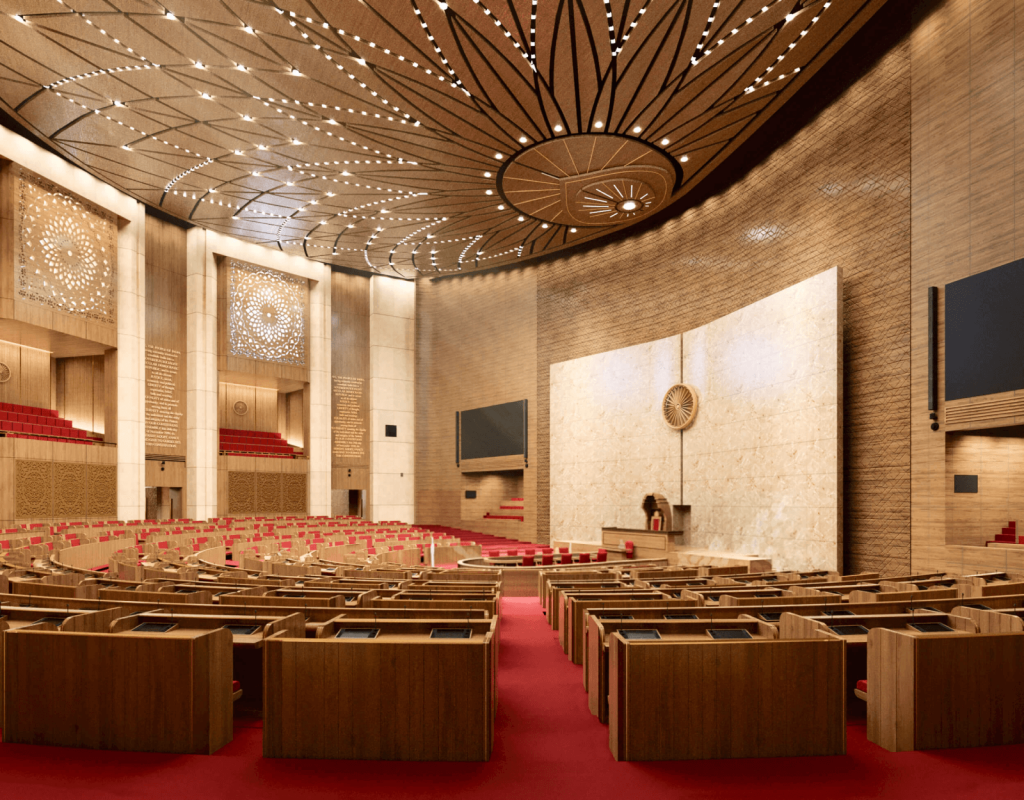
Conclusion:
India’s new Parliament building represents a significant milestone in the country’s democratic journey. With Bimal Hasmukh Patel’s visionary design and commitment to sustainability, the structure embodies the ideals of transparency, inclusivity, and progress.
The new building is not merely an architectural marvel; it will be a dynamic hub where lawmakers can deliberate on policies and shape the nation’s destiny. As India embraces the future, the new Parliament building will serve as a proud symbol of its democratic heritage, cultural diversity, and aspirations for a better tomorrow.
